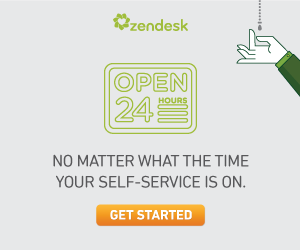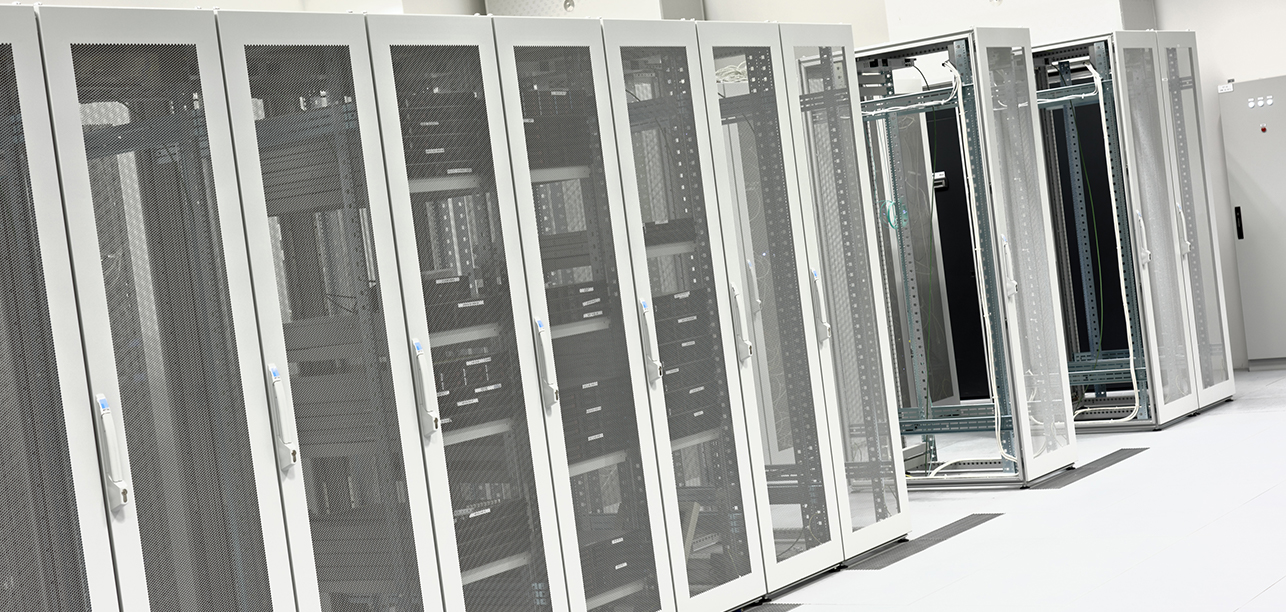Month: November 2013

 With the official business of the acquisition behind us, Internap and iWeb are ready to embark on our journey together as one of the top pure-play IT infrastructure services providers. We are proud to join forces with our new iWeb team members from around the world, and can’t wait to see what our combined army of hosting and cloud experts can achieve.
With the official business of the acquisition behind us, Internap and iWeb are ready to embark on our journey together as one of the top pure-play IT infrastructure services providers. We are proud to join forces with our new iWeb team members from around the world, and can’t wait to see what our combined army of hosting and cloud experts can achieve.
With our shared focus on meeting customer needs at every stage of the business life cycle, along with our shared passion for OpenStack, our consolidated team is certainly far greater than the sum of its parts.
Since day one, though, Internap’s relationship with iWeb has been about more than just financial statements and strategic business goals. Every interaction between our teams has confirmed that our ideas, philosophies, and personal synergies are perfectly harmonized with each other, and we couldn’t be happier with the combined team that we have created.
We’d like to extend a heartfelt ‘thank you’ to Christian and the entire iWeb team for your willingness to “pass the puck” to us. We look forward to learning from each other and writing the next chapter of Internap and iWeb history together.
Who knows, we may even learn a thing or two about hockey.
Explore HorizonIQ
Bare Metal
LEARN MORE
Stay Connected

Getting the biggest bang for your bargain buck
 Once upon a lifetime ago, I served on the front lines of a big-box store as a sales associate during the holiday retail season. Our army’s objective was to make your shopping experience somewhat more tolerable and your purchase more profitable. Unless you live in a remote part of the US where the local bait shop doesn’t have a Black Friday sale, you know that the holiday shopping mania commences this week. ‘Tis the season when retailers strive to eclipse the sales of years past by offering what many of us look forward to most: Bargains.
Once upon a lifetime ago, I served on the front lines of a big-box store as a sales associate during the holiday retail season. Our army’s objective was to make your shopping experience somewhat more tolerable and your purchase more profitable. Unless you live in a remote part of the US where the local bait shop doesn’t have a Black Friday sale, you know that the holiday shopping mania commences this week. ‘Tis the season when retailers strive to eclipse the sales of years past by offering what many of us look forward to most: Bargains.
Bargains are a good thing, right? Aside from the feel-good sensation of buying something for a low price, the value of bargains is also important. Of course, it could make for interesting conversation when you tell a friend that you bought a 70” TV for roughly the same price they may have paid for their 55” set. But, underneath that emotion of “winning at shopping,” how do you measure the value, or the distance that your dollar takes you?
Like so many bargain-minded shoppers, guilty of letting price guide my buying decision, the story of the computer I bought my freshman year of college begins like this: “I got a great deal.” It’s true. I did get a great deal on a computer that had “everything” I needed. It met all the specifications necessary to help me do my homework. It was built using the latest technology by a reputable manufacturer, and was small enough to fit on the tiny desk in my tiny dorm room. It was great… until I realized during my second semester that I wanted to play video games on it, too. The lesson learned: Truly understanding your needs beforehand increases the feeling of satisfaction derived from a purchase.
Not coincidentally, the same philosophy holds true when evaluating the IT infrastructure needs for your business. The vast majority of hosting companies will lure buyers in with attractive pricing and industry-standard specifications. But, how does the solution meet your specific requirements? Will it help you adapt to the changing needs of your business?
For example, as an IT decision maker searches for a cloud server, it may be tempting to base the purchase on specs and price alone. Without more thorough research, they may subject their business needs to noisy neighbors in the cloud, disparate systems from multiple vendors or servers that can’t support the business’s changing needs. What would happen if an online gaming company based their infrastructure purchase on the number of users they have currently, instead of establishing an adaptive environment to accommodate high traffic volume if their game becomes hugely popular? Poor infrastructure decisions can be devastating to a company’s bottom line and impede the scaling of a company’s operations to meet growing demand.
While the computer I bought on Black Friday may have been a “good deal,” it did not ultimately meet my needs as I failed to consider other factors in my buying decision. So, buyers beware! A bargain is only a bargain if what you bought suits your needs. If it doesn’t provide the value you expected or take you as far as you thought it would, you could end up spending more money on what you should have bought in the first place.
Explore HorizonIQ
Bare Metal
LEARN MORE
Stay Connected

Banner ads are everywhere. So much that most of us have “banner blindness.” Yep. That’s a thing. We have become so used to them, that blocking them out (or anything that sort of looks like them) has become a subconscious behavior. So when the average user is over saturated with all things advertising, how do you stand out? We have a couple tips to help.
1. Keep it Simple.
Your banner ad should stand up to the 2 second glance. This means keeping wording down to a minimum, and using imagery that compliments the message. Keep away from busy designs, or flashy annoying animations. Below are a couple of examples of ads that do well to show their message in a clear and efficient manner. The first one being Microsoft, which in recent years has really cleaned up their design act.

Clean. Simple. And to the point.
2. Include your logo.
On every frame. Somewhere. Anywhere. Top, middle, bottom. Make sure your brand is there to represent. Ally uses both their abbreviated logo mark and their full name logo.
3. Focus.
This goes along with the “Keep-it-Simple” rule. Keep your ads focused on your target audience. If you’re advertising a specific service or product, stick to that message. Multiple messages can cause unnecessary business, and confusion. Radio Shack is working this idea by promoting the “gift for dads” angle. Zen Desk is appealing to their late night users, who need support. (probably set to display only at night!).

4. Effective Call to Action.
Your banner should have something that is obviously clickable. Buttons tend to convey this better than text. And brighter, bigger buttons tend to have the highest click throughs. Call to actions have their own best practices, which you can review in my previous blog post, but here are a couple examples of some effective call to actions in banners. The hulu banner gives all the visual focus to the button, and brings it home with a nice “Try it Free.” iStock is keeping it interesting here, by using a coupon as the call to action, and has a nice animated arrow reminding you, where it is. Bing is using a classic orange call to action. Orange conveys a sense of urgency that warm colors do well, without the negative “danger” emotions that a color like red can bring out.
5. Make it Interactive.
“Interactivity increases brand recall 63% more than non interactive ads”* When dealing with the over saturation problem, interactivity can be one of the most effective ways to gain and keep a users attention. However, a word of caution to avoid creating overly flashy and annoying ads. Below are a couple of select interactive ads. Click on them to see their full interaction.
Sources :
http://bannerblindness.org/
http://www.bannerblog.com.au
* http://adage.com/article/special-report-digital-conference-2010/world-s-banner-ads-worked/143311/
http://www.smileycat.com/design_elements/banner_ads/index.php?page=1
Updated: January 2019
Explore HorizonIQ
Bare Metal
LEARN MORE
Stay Connected

Lets talk Load Balancing. No, not the food kind where you struggle to get turkey, gravy, biscuits and everything else on your plate.
Lets talk high traffic internet bandwidth. So, your business is growing, your web site is getting more and more popular, and the single server you’re currently running is starting to get overworked. What do you do? Add another server, of course, before your site performance starts to suffer. That new server represents a significant investment, and you want to make sure that you’re getting everything you can out of it.
However, simply adding capacity doesn’t always solve the problem. If your initial server is still running at or near full capacity and your second server is only at 20% or so, many your site visitors may experience delays. If your site gets even bigger, the problem can be magnified: you might have ten servers, two of which are maxed out, while two others are almost idle. Even though you have enough servers to run your site efficiently, you’re not getting the site performance you expect. The solution? A load balancer.
A load balancer is a hardware device which receives requests from your website visitors and routes them to your servers to ensure optimal performance. Load balancers are key elements in many of the complex web hosting solutions we’ve built for our customers.
Load balancers have two main benefits: they improve site performance at peak times, and they facilitate failover if one of your servers goes down. Load balancers improve site performance by monitoring your servers and routing traffic to them based on a variety of factors, including total server capacity, current server utilization, and current server performance. And in the event that one of your servers experiences a hardware failure, your load balancer will recognize the problem immediately and stop routing requests to that server, eliminating any site failures for your visitors.
If you’d like to find out if a load balancer is right for you and your website, please contact us and let us know that you’d like to explore your complex web hosting options.
Updated: January 2019
Explore HorizonIQ
Bare Metal
LEARN MORE
Stay Connected

Our next generation AgileCLOUD goes into public beta today, and we’re really excited about the launch. Huge strides have been made in the areas of both scalability and performance.
Next generation AgileCLOUD is 100% OpenStack underneath the hood. We’re consuming the latest version of OpenStack, Havana, soon to be Icehouse, and we expose the full OpenStack API to our customers. It’s open, interoperable and helps eliminate vendor lock in.
In addition to general openness, performance is also a key message of our next generation AgileCLOUD.
We offer both virtualized instances as well as bare-metal instances with no hypervisor, all over the same OpenStack API.
In addition to the OpenStack API, our customers can still use hAPI, the hosting API as well as our portal to manage their complete environment.
Next generation AgileCLOUD is flexible. Not only do you have the option get the exact amount of CPU and RAM that you need for your instances, we’ve made great strides in the types of disks we offer. Disk I/O is traditionally a big pain point in the cloud, and we think we’ve got a really appealing solution for you. Not only do we have local ephemeral storage that is 100% SSD-backed, we also offer external network-attached block storage with finely grained quality of service.
For the first time, you can be guaranteed that noisy neighbors do not affect your disk I/O performance. Instead, you can dial up or dial down the exact amount of IOPS and bandwidth that you need. Pay for only what you use and get the performance that you expect.
You can sign up for the beta of next generation AgileCLOUD at https://www.inap.com/agilecloudbeta/.
In addition, as a gesture of our gratitude, we’ll provide you with a $1000 credit for use on our generally available next generation AgileCLOUD.
We encourage you to sign up for the beta. Kick the tires, spin the wheels. We’re eager for your feedback.
Explore HorizonIQ
Bare Metal
LEARN MORE
Stay Connected

Customer spotlight: Rhapsody International cranks up IT infrastructure for global expansion
 Rhapsody International, the parent company of leading subscription music services Rhapsody and Napster, gives members unlimited on-demand access to a global catalog of more than 32 million tracks, whether they’re listening on a PC, laptop, Internet connected home stereo or TV, MP3 player or mobile devices. In December 2011, Rhapsody International acquired Napster International and is now available in 19 countries worldwide.
Rhapsody International, the parent company of leading subscription music services Rhapsody and Napster, gives members unlimited on-demand access to a global catalog of more than 32 million tracks, whether they’re listening on a PC, laptop, Internet connected home stereo or TV, MP3 player or mobile devices. In December 2011, Rhapsody International acquired Napster International and is now available in 19 countries worldwide.
As Rhapsody International looked to bring Napster to new markets across Europe and Latin America, Rhapsody needed to address a new set of customer demands. An Internap customer since 2010, Rhapsody must make sure its IT infrastructure can provide the scalability, storage and speed required to ensure subscribers consistently enjoy a premium streaming experience.
Managed Hosting
With a growing footprint across Europe, Rhapsody International needed to optimize the content delivery to Napster. To solve this problem, Rhapsody added Internap’s managed hosting service in London, which significantly streamlined the exchange of content through faster performance and reduced latency.
Colocation footprint
The continued global expansion of Napster meant a huge increase in the amount of data that must be transmitted and stored. As a result, Rhapsody International secured options to increase their colocation footprint in Internap’s Seattle data center, including more power and racks, to accommodate the influx of data. High-density power capabilities allow Rhapsody International to continue scaling up their storage needs and get the most out of their colocation services.
Performance IP
Rhapsody’s global account management services uses Internap’s Performance IPTM service, which ensures the data is transferred as efficiently as possible. Instead of relying on a single ISP, Internap’s internet service leverages up to 11 major carriers simultaneously. All Internet providers experience outages and latency at some point, so having multiple carriers reduces the risk of poor performance. In addition, Managed Internet Route Optimizer™ (MIRO) analyzes Internet performance across the globe, and makes intelligent route adjustments based on real-time data. By finding the fastest route available with the lowest latency, Rhapsody International can provide a better quality music streaming experience for users.
Through managed hosting, colocation and Performance IP services, Rhapsody International has set the stage with the right IT infrastructure foundation to accommodate their expansion needs. With a solid business model and an eye for even more growth in the near future, the scalability of their infrastructure will continue to be a critical part of their strategy.
Learn more about how Rhapsody International uses Internap’s services.
Explore HorizonIQ
Bare Metal
LEARN MORE
Stay Connected

 Speed, noise, colour, emotion… passion… history. Formula 1 isn’t just a sport. To its millions of fans around the world, it is a religion. Played out on a global stage in some of the world’s most glamorous locations, it is the ultimate gladiatorial battle, combining technological precision and excellence with grit, determination and the highest levels of sporting skill and agility seen anywhere on earth. A sport where the slightest mistake can mean not simply the difference between winning and losing, but between life and death. Fast, furious… unforgiving. Formula 1 is the ultimate window into the pinnacle of human endeavor.
Speed, noise, colour, emotion… passion… history. Formula 1 isn’t just a sport. To its millions of fans around the world, it is a religion. Played out on a global stage in some of the world’s most glamorous locations, it is the ultimate gladiatorial battle, combining technological precision and excellence with grit, determination and the highest levels of sporting skill and agility seen anywhere on earth. A sport where the slightest mistake can mean not simply the difference between winning and losing, but between life and death. Fast, furious… unforgiving. Formula 1 is the ultimate window into the pinnacle of human endeavor.
It is the most watched sport on earth. Yes, you’ve heard that statistic before. But it is true. Half a billion people tuned in globally to watch the 2012 Formula 1 season unfold. Half a billion. Only the soccer World Cup and the Olympics can claim more viewers than that. They happen every four years. Grands Prix take place every two weeks.
From a business perspective, Formula 1 also exists as one of the most high profile billboards in the world. With just 11 teams and 22 drivers, potential advertising space on these modern day chariots is limited and in high demand, with every penny of investment going to cut the tenths of a second that can make the difference between points, podiums and that most powerful drug of all… victory.
And yet for all its allure, for all its success, Formula 1 is still a niche interest in one of the biggest global markets of them all. America remains the land of opportunity for Formula 1 and the market in which it has the most interest in conquering.
Land of opportunity
It has long been said that Formula 1 needs America more than America needs F1 and, since I started working on the US television broadcast four years ago, I have seen an extent to which this old adage rings true. America is a sports mad nation, but a sports mad nation with quite an insular view. For many US sports fans the great rivalries are not inter-nation, but inter-state. NASCAR and IndyCar have always carried more popular support stateside than Formula 1, their calendars existing almost exclusively within the North American continent.
Of course, Formula 1 does itself no favours in trying to establish itself in the US. It is the big show, and considers itself to be the pinnacle of all racing worldwide. How very arrogant to come into still unchartered territory and claim that it is the best racing out there. But Formula 1 and humility have never and will never be easy bed fellows. There are no American teams. There are no fulltime American F1 drivers. How then, can F1 sell itself to the mass populous of its most important market?
In order to ensure roots are laid down for a solid future in the US, a partnership was needed with a network that would promote the championship and push it forward. In NBC Sports, I think Formula 1 has that. It has been a pleasure to work this season with the whole crew and with a network keen to promote Formula 1 across its many and varied platforms. The committed and loyal fan base that exists in the States needs to know that waking up in the early hours will be worth its time, and the quality of the show reflects the investment and faith that the network has in the product.
The Monaco Grand Prix saw the highest figures for an F1 race in the US for over five years. The fan base is there, and it is growing with each passing race.
I am glad to see US-based companies like Internap showing their support for Formula 1 by sponsoring the Sahara Force India Formula 1 team. Internap, a provider of high-performance hosting services, hosts Sahara Force India’s website which is the primary means of communicating with the media and engaging with the team’s growing, global fan base. The US Grand Prix gives Internap the opportunity to support Formula 1 in the states while strengthening customer relationships through VIP hospitality and exclusive access to the Sahara Force India team.
Formula 1’s future in the US appears to be very bright indeed. The interest is clearly there for US-based sponsors, and the fan base is expanding almost as fast as the Formula 1 calendar itself. Formula 1 may always have believed that it needs America more than America needs it, but on recent form it appears that while America might not need Formula 1, it not only wants Formula 1… it loves Formula 1.
Explore HorizonIQ
Bare Metal
LEARN MORE
Stay Connected

Maximize your colocation investment with key data center features
Through a foundation of reliable IT infrastructure, colocation provides increased scalability, security and performance. Many organizations incorporate colocation into their operational strategy as a cost-effective way to manage scale and gain access to advanced technology. The economic benefits of colocation and data center services can help your business accommodate high demand application deployment or big data initiatives.
Despite the benefits of outsourced colocation services, there are heightened concerns about colocation providers’ ability to scale cost-effectively, mitigate service interruptions, and reduce total cost of ownership.
Choosing the right provider
The decision to invest in colocation requires careful evaluation of the provider’s data centers to make sure the facilities are designed for maximum flexibility, scalability and resilience.
In this webinar, we examine the key features you should look for in a data center to maximize the return on your colocation investment.
Watch the webinar recording to learn:
- How a service provider’s data center design choices influence costs and impact application performance and availability
- Why a data center’s power density is one of the primary considerations for an IT infrastructure buyer
- The difference between redundancy and concurrent maintainability and how the latter can optimize your uptime at a reasonable cost
Explore HorizonIQ
Bare Metal
LEARN MORE
Stay Connected

One of the seemingly simple things that can be troublesome to get a grasp on is dealing with time zones on your devices and servers. Oftentimes, there can be a lot of discrepancy. These four tips will help you keep your servers on time and also help you when dealing with servers set to time zones not native to you.
1. System Updates Also Include Time Zone Updates
Oftentimes, a country, state, province, or even a locality or city can change their time zone rules, both for offset and for any seasonal changes (daylight savings). Microsoft and various Linux vendors note these and release updates for their software that accounts for this. It is considered good practice to keep track of updates, especially for time zones
2. Check-in Regularly
Even if you keep your time zone data up to date, you still need to make sure your server is keeping time. Thanks to common internet connectivity, this is easily handled via the Network Time Protocol (NTP). Major OSes often have an NTP client that can connect to NTP servers and obtain precise time data to keep their clocks synchronized. In Windows, this is done automatically, and if the server is connected to a Domain Controller, then it will receive updates from the controller. In Linux, the client of choice is rdate. You can easily setup a cronjob (scheduled task) to update against a NTP server:
0 0 * * * rdate -s rdate.darkorb.net
When put in the root crontab (crontab -e as root user), it will contact NTP server rdate.darkorb.net at midnight every day.
3. Changing Time Zones
By default, our infrastructure and deployed servers use the same time zone as our corporate headquarters in Chicago, IL, which is US Central Time. This means that the time zone offset from UTC (or GMT) would be:
UTC-6 (Normal)
UTC-5 (Daylight Savings Time)
If you’re curious, here are the offsets for the locations of our datacenters outside Chicago:
Phoenix:
UTC-7 (Note: Daylight savings is never observed in the US state of Arizona)
Amsterdam:
UTC+1 (Normal)
UTC+2 (Daylight Savings Time)
If you need to change your time zone in Windows, you can do so in the Time/Date settings in the control panel. Linux over the command line is trickier, but still easy to do. In most Linux/Unix systems, there is a file called /etc/localtime that is ‘linked’ to the proper time zone file. Time zones are stored in /usr/share/zoneinfo. For example, if you wanted to change to US Eastern Time, you would run this command:
ln -sf /usr/share/zoneinfo/America/New_York /etc/localtime
4. Calculating Time Zone Differences
One of the biggest headaches is trying to figure out what time it is in a time zone you are not familiar with. There is actually a mathematical formula to determining what the time is in a remote time zone:
“Local Time” – “UTC offset for Local Time” = “Remote Time” – “UTC offset for Remote Time”
Since you know everything but the remote time, you can plug in the rest and solve for the variable. Hopefully, we can recall our high school Algebra here. To keep things straight, we will also use 24 hour time. Let’s work an example if it is 8 PM (2000 hours) in Chicago (UTC-5) currently and you want to know what time it is in Amsterdam (UTC+2):
2000 – (-500) = X – (+200)
2000 + 500 = X – 200
2500 = X – 200
2700 = X
Since 24 hour time is measured in base 2400 and not base 10 like decimal, this means that it is 3 AM (0300) in Amsterdam on the next day.
With this information, you are sure to get a better handle on managing time zones on your servers, whether it is here at INAP or halfway across the world.
Updated: January 2019














